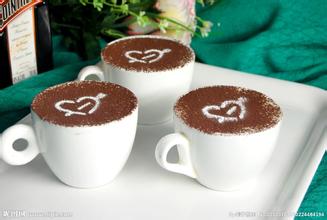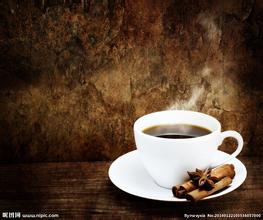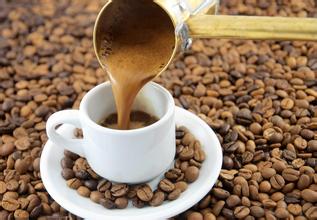Who invented the Blue bottle Cafe?
Blue bottle Cafe
After the Turks occupied Yemen, with the spread of religion, the first cafe was established in Mecca in the 16th century. Coffee has developed from a pharmaceutical nature to a popular drink, which is said to be related to Zheng he's voyages to the West in the 15th century. Zheng he's tea culture made Muslims realize that refreshing drinks could also be used as daily necessities. Those who hold this view point out that the coffee utensils used by Turks today are very similar to those used by Chinese teacups.
Constantinople traded frequently with continental Europe. In 1615, Venetian merchants trafficked coffee to Italy. At first it was an expensive drink, but soon, after 1620, coffee became secular in Europe.
The first coffee shop in Europe was established at Oxford University in 1650, and it soon became an "open exchange of ideas" in London, similar to today's forum BBS, hehe. It can be said that before the development of modern printing industry, cafes played the role of media salon to a certain extent.
In 1669, coffee was known to the French. The greatest influence of cafes on France should be reflected in the French Revolution, and those who have seen Les Miserables probably remember that the insurgents planned the revolution in the cafe. After the tide of the Great Revolution passed, the cafe was transformed into a gathering place for young artists. The Montmartre Cafe in Paris was mentioned more than once in Monet and Impressionism and the Legend of Picasso; as well as the Latin Cafe, which is a favorite place for writers, poets and philosophers, such as Hemingway, Sartre and Beckett, and Procobo, the first cafe in Paris, is also in the Latin district.
In 1683, Viennese mistakenly got coffee beans that Muslims refused to leak. The first cafe in Vienna, Blue bottle, opened. But these Christians don't like Muslim drinks, and the clever boss Kochisky filtered out the coffee grounds and poured milk into the coffee, which is the prototype of today's LATTE coffee. The Vienna Cafe is characterized by the smell of music and lattes. At this point, I can't help it. I really want to visit the Central Cafe in Vienna where Beethoven has been.
Coffee entered Germany in 1670, and serious Germans debated whether coffee was good for health, so cafes did not appear in Germany until 1721. But in the 19th century, the Germans seized the historical opportunity to make a lot of money in the coffee industry. At that time, American coffee planters began to recruit coffee farmers from Europe under the impact of the wave of abolitionism. As a result, at least 80% of Guatemalan coffee beans are shipped to all parts of Europe by German businessmen. The two world wars reshuffled the cards in turn. Today, Germany is the second largest coffee consumer in the world, and its per capita consumption is much higher than that of the United States. In the past, I only knew that Germans could drink beer, but today I know that they are so well-rounded and admired.
Italian petty bourgeoisie's favorite coffee is always covered with milk foam, yes, this is Italian coffee, Cappuccino and Espresso, the former is hot milk coffee, the latter is espresso. In 1945, the stilling apparatus invented by the Italian Gaja (now also a brand of coffee utensils) was popular in Europe. Unlike English and French cafes, Italian cafes are exquisite, casual and artistic. It is casually reflected in the decoration and artistic flavor of the cafe, hehe, where they drink coffee in the open air, surrounded by Colosseum and Michelangelo sculptures.
It was only during the Meiji Restoration that the Japanese accepted coffee as a representative of the Western way of life. And probably when many people think of Japan, the first thought is, everything there is very expensive, isn't it? It is true that cafes in Ginza in Tokyo often cost tens of dollars, but the most expensive ones are coffee cups. They like to use English bone china coffee cups to serve coffee, which is worth tens of thousands or even millions of yen. Of course, this is a high-end cafe, most people can go to the real pot on the island. The most powerful place is that the Japanese enjoy both elegance and popularity: the most expensive coffee is in Japan, and the most cheap coffee, instant coffee and canned coffee are also invented by the Japanese!
Lively Americans don't seem to care much about the appearance and taste of coffee, and they even add eggs to their coffee! The coffee pot commonly used by Americans is called a boiling pot, with coffee powder on the top and water on the bottom, and the aroma of the coffee powder is extracted by steam after heating. This method is easy to cook bitter taste, but Americans do not care, they continue to stir-fry coffee beans in a pan with relish and continue to over-extract coffee powder. However, the most admirable thing about American coffee is that it insists on roasting, grinding and brewing on the spot, pays great attention to freshness, and strives to keep it fresh by improving packaging and so on. American coffee merchants are the first to mark the baking date on food bags, a move that has had a huge impact on the food industry.

Important Notice :
前街咖啡 FrontStreet Coffee has moved to new addredd:
FrontStreet Coffee Address: 315,Donghua East Road,GuangZhou
Tel:020 38364473
- Prev

What are the best places to drink coffee in Shanghai?
Rose Cafe: unlimited refills where drinking coffee can be indefinitely refilled, as long as you can stand it. The coffee here is Japanese charcoal-roasted coffee. They say that the coffee beans baked with charcoal are mixed with the woody fragrance of charcoal and the combination of strength and softness. There is a height of space that other cafes in Shanghai do not have, baroque columns, carvings, flowers everywhere, on every table.
- Next

Introduction to the taste of story grinding scale of Latin American coffee beans
South American countries have switched to altitude classification, and only Colombia maintains this traditional classification system, which many Colombian coffee makers have recognized and have begun to demand a change in the classification system. Colombia's famous producing areas include Medellin, Armenia and Manisales, so the word MAM is sometimes seen on coffee bags.
Related
- What documents do you need to go through to open a coffee shop? coffee shop coffee shop certificate processing process
- How to purchase Coffee beans in small Cafe how to choose a suitable supplier for domestic Coffee supply Company
- How to drink Starbucks Fragrance White Coffee? how to make Australian White Coffee? what Italian coffee beans are recommended?
- The Story of Flora Coffee: the name of Flora Coffee Bean and the implication of the Flowers on Florna Coffee
- How much does a cup of coffee cost? How much is the profit of a cup of coffee? What is the profit of the coffee shop in a year?
- Yunnan small Coffee, known as "fragrant Coffee", introduces the characteristics of Alpine Arabica Coffee producing areas in Yunnan, China
- 2023 latest Starbucks full menu price list how much is a cup of Starbucks coffee what is better to drink the most popular hot and cold drinks recommended
- Starbucks different kinds of Coffee Price list Starbucks menu 2023 Top Ten Best drinks in Starbucks
- Starbucks Spring praise Comprehensive matching Coffee Bean theme Story Packaging implication and taste description
- The cost of a cup of coffee latte American coffee cost price and selling price

